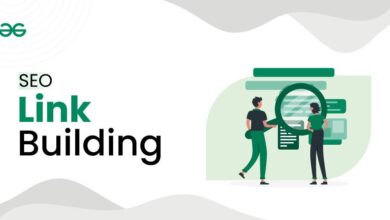
5 Business Blogging Tips to Help You Get Started
5 Business Blogging Tips to Help You Get Started: So you want to start a business blog? Awesome! It’s a fantastic way to connect with your audience, build brand awareness, and even drive sales. But where do you begin? Feeling overwhelmed? Don’t worry, we’ll break down the essentials, making the process less daunting and more exciting.
This post isn’t about overwhelming you with jargon; it’s about giving you practical, actionable steps to launch your blog successfully.
We’ll cover defining your niche and audience, crafting a killer content strategy, and more. Think of this as your roadmap to blogging success. Get ready to transform your business online!
Defining Your Business Blog’s Niche and Audience

Source: designrr.io
Starting a business blog without a clear understanding of your target audience is like casting a fishing net into the ocean without knowing what kind of fish you’re hoping to catch. You’ll likely catch something, but it might not be what you need to thrive. Defining your niche and audience is crucial for creating content that resonates, attracts readers, and ultimately, drives business growth.
This involves identifying your ideal reader and crafting content that speaks directly to their needs and interests.Identifying your target audience helps you focus your efforts and resources, ensuring your content reaches the right people. Without a defined audience, your blog will struggle to gain traction and achieve its goals. This section will explore how to define your niche and audience effectively, using practical examples to illustrate the process.
Target Audience Identification
Let’s imagine we’re launching a business blog focused on sustainable business practices. Three distinct target audiences could be identified:
- Small Business Owners (1-50 employees): These individuals are often juggling multiple roles and are interested in practical, cost-effective strategies for incorporating sustainability into their operations. They need clear, concise advice, easily implemented solutions, and case studies of similar-sized businesses. They are likely to be time-constrained and prioritize quick wins.
- Corporate Sustainability Managers: These professionals work within larger organizations and are responsible for developing and implementing comprehensive sustainability programs. They are interested in in-depth analysis, industry best practices, and data-driven approaches. They need access to research, reports, and tools that support strategic decision-making. They are typically well-versed in sustainability concepts and seek advanced strategies.
- Environmentally Conscious Consumers: This group is interested in supporting businesses that align with their values. They want transparency, ethical sourcing information, and proof of a company’s commitment to sustainability. They are looking for stories, testimonials, and evidence of positive environmental impact. They are likely to share content they find compelling on social media.
Blog Post Topic Ideas (Sustainable Business Niche), 5 business blogging tips to help you get started
Understanding your target audience informs the topics you choose to cover. Here are five blog post ideas tailored to the small business owner audience within the sustainable business niche:
- “5 Easy Ways to Reduce Your Carbon Footprint on a Budget”: This addresses the need for practical, cost-effective solutions. It offers immediate value and actionable steps.
- “Sustainable Packaging Options for Small Businesses”: This tackles a common challenge faced by small businesses, providing concrete alternatives and supplier recommendations.
- “Marketing Your Sustainability Initiatives to Attract Customers”: This speaks to the business imperative of demonstrating value to customers. It focuses on practical marketing strategies.
- “Case Study: How [Small Business Name] Achieved X% Reduction in Waste”: This provides a relatable example of success, showing that sustainable practices are achievable for similar businesses.
- “Top 5 Free Tools to Track Your Business’s Environmental Impact”: This offers practical resources to help small businesses measure and manage their sustainability efforts.
Ideal Reader Persona
Let’s create a persona for our ideal reader – a small business owner interested in sustainable practices: Name: Sarah Miller Age: 35-45 Occupation: Owner of a small artisan bakery Demographics: Female, lives in a suburban area, environmentally conscious Interests: Sustainable business practices, local sourcing, community engagement, reducing waste, increasing profitability Online Behavior: Actively searches for practical advice online, follows relevant industry blogs and influencers on social media, engages in online communities related to small business and sustainability.
Prefers concise, easily digestible content with actionable steps.
So you’re diving into the world of business blogging? Awesome! My five business blogging tips to help you get started cover everything from keyword research to consistent posting. But did you know video can boost your reach? Check out this great resource on getting it on with youtube to learn how to leverage YouTube alongside your blog.
Back to those blogging tips – remember, engaging content is key to building a loyal audience!
Content Strategy and Planning

Source: thestartupboy.com
A well-defined content strategy is the backbone of a successful business blog. It ensures your content is purposeful, reaches the right audience, and contributes to your overall business goals. Without a plan, your blogging efforts risk becoming scattered and ineffective, failing to generate the desired results. This section will guide you through creating a content calendar, exploring different content formats, and organizing your blog’s content for optimal user experience.Planning your content in advance prevents last-minute scrambles and ensures consistent publishing.
A strategic approach allows you to focus on quality over quantity, leading to higher engagement and improved search engine rankings. This involves forecasting topics, scheduling publication dates, and aligning your content with your broader marketing strategy.
Three-Month Content Calendar
A content calendar provides a visual overview of your planned blog posts. It helps you stay organized, maintain consistency, and track your progress. Below is an example calendar, remember to tailor it to your specific business needs and audience.
| Week | Date | Topic | Content Format | Goal |
|---|---|---|---|---|
| Week 1 | October 26, 2023 | Top 5 Tools for Boosting Productivity | Listicle | Drive traffic, establish expertise |
| Week 2 | November 2, 2023 | How to Write a Compelling Business Plan | How-to Guide | Generate leads, position as authority |
| Week 3 | November 9, 2023 | Case Study: How We Helped X Company Achieve Y Results | Case Study | Build trust, showcase success |
| Week 4 | November 16, 2023 | The Ultimate Guide to Social Media Marketing | E-book/Downloadable Resource | Lead generation, build email list |
| Week 5 | November 23, 2023 | Understanding Your Customer’s Journey | Blog Post | Increase engagement, build relationships |
| Week 6 | November 30, 2023 | 5 Common Mistakes in Email Marketing (and How to Avoid Them) | Listicle | Drive traffic, solve problems |
| Week 7 | December 7, 2023 | How to Improve Your Website’s | How-to Guide | Improve organic search rankings |
| Week 8 | December 14, 2023 | Client Testimonial Roundup: Success Stories | Blog Post | Build trust, showcase positive feedback |
| Week 9 | December 21, 2023 | Year-End Tax Planning for Small Businesses | Blog Post | Position as expert, provide value |
| Week 10 | December 28, 2023 | Setting Goals for the New Year: A Business Perspective | Blog Post | Increase engagement, build anticipation |
Comparison of Content Formats
Different content formats serve different purposes. Choosing the right format is crucial for maximizing impact and achieving your business goals.
- Listicles: These are list-based articles (like “Top 10 Tips…”). They are easily digestible, shareable, and ideal for quickly conveying information or providing actionable advice. They are effective for driving traffic and building brand awareness.
- How-to Guides: These provide step-by-step instructions on completing a specific task. They are valuable for establishing expertise and building trust. They are best for solving problems and providing practical solutions, leading to increased engagement and lead generation.
- Case Studies: These showcase real-world examples of how your product or service has helped clients achieve their goals. They are powerful for building credibility and demonstrating the value proposition. They build trust and showcase your expertise, often resulting in higher conversion rates.
Thematic Clustering of Blog Post Topics
Organizing blog posts into thematic clusters improves website navigation and enhances user experience. It allows readers to easily find related content and encourages deeper engagement.Below is a possible sitemap demonstrating thematic clustering of the ten blog post topics listed above.
- Marketing & Sales: Top 5 Tools for Boosting Productivity, The Ultimate Guide to Social Media Marketing, 5 Common Mistakes in Email Marketing (and How to Avoid Them), Client Testimonial Roundup: Success Stories.
- Business Planning & Strategy: How to Write a Compelling Business Plan, Understanding Your Customer’s Journey, Setting Goals for the New Year: A Business Perspective.
- Finance & Operations: Year-End Tax Planning for Small Businesses.
- Website Optimization: How to Improve Your Website’s .
- Case Studies: Case Study: How We Helped X Company Achieve Y Results.
Final Thoughts: 5 Business Blogging Tips To Help You Get Started

Source: automationninjas.com
Starting a business blog can feel like a huge undertaking, but by focusing on a clear niche, planning your content strategically, and consistently delivering valuable information, you’ll be well on your way to building a thriving online presence. Remember, it’s a marathon, not a sprint! Keep creating engaging content, interacting with your audience, and watching your blog grow. Now go forth and blog!
Essential FAQs
How often should I post?
Consistency is key, but don’t burn yourself out. Aim for a realistic schedule, even if it’s just once a week. Quality over quantity always wins!
What if I don’t have a lot of time?
Batch your content creation! Spend a few hours one day writing multiple posts, then schedule them for later release.
How do I promote my blog?
Share your posts on social media, engage with comments, and consider guest blogging on other relevant sites.
Should I use images in my posts?
Absolutely! High-quality images make your blog more visually appealing and engaging. Always use properly licensed images.





